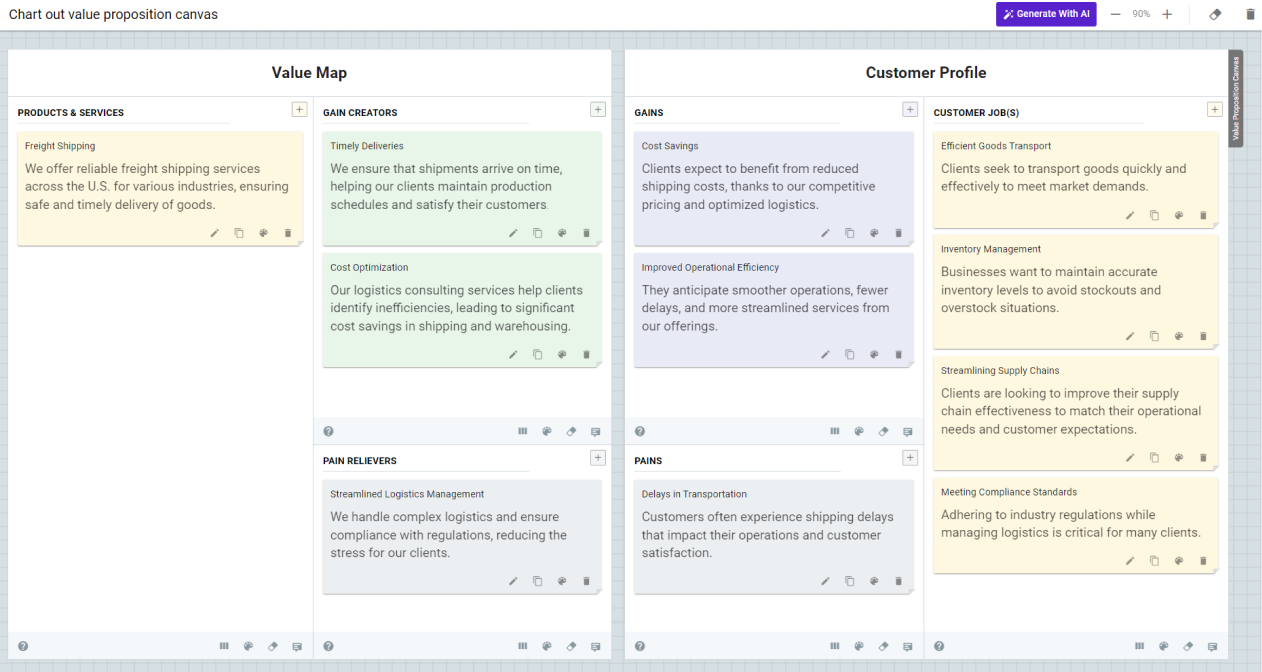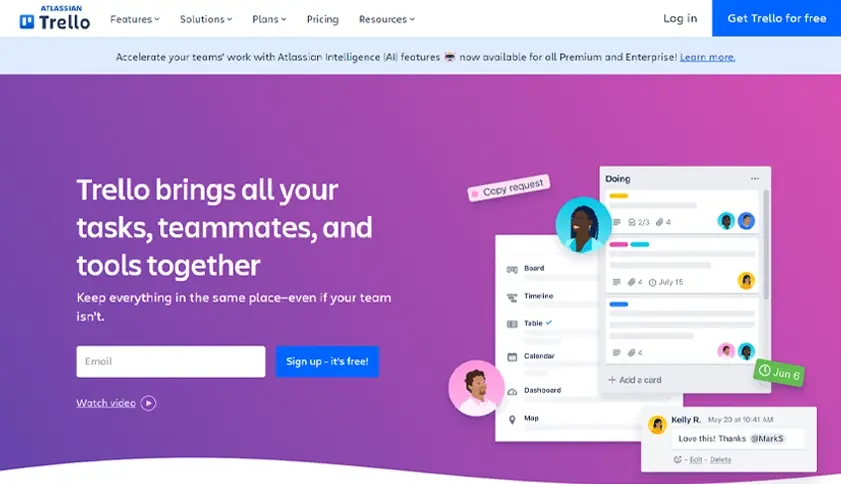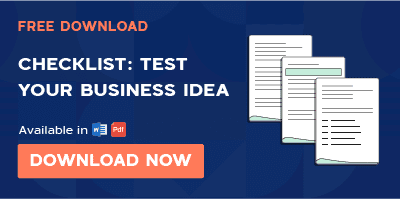Two of the most significant things readers look for in your business plan are:
- Descriptions of your product and service offerings
- How you compare with your competitors
That’s where a unique value proposition (UVP) comes in.
A strong value proposition clearly communicates the distinct advantages and benefits your product or service offers. It also helps potential investors and customers quickly grasp why your business does better than your competitors.
That said, many businesses struggle to write an impactful UVP. In this article, we’ll go through how to write a convincing unique value proposition in a business plan along with why it’s important for your business. Let’s get started.
What is value proposition in a business plan?
A value proposition in a business plan is a concise statement that explains the unique benefits and value your product or service offers your customers.
The goal is to highlight why customers should choose your business over competitors by addressing how your product/service solves their specific needs or provides advantages that the competition doesn’t. In short, the VP is essential for defining the core value of the business offering and differentiating it in the market.
Why is a value proposition important?
Including a value proposition in your business plan is crucial because it serves as the first impression your potential customers and investors will make of your business.
Let’s see why it’s necessary up close:
Clear communication
A strong value proposition is a powerful short slogan about your product or service. It enhances customer engagement, improves conversion rates, as well as builds trust and credibility. This gives your brand a competitive edge.
Attracts investors
A compelling value proposition is a key factor in attracting investors. It demonstrates your grasp over the market, the uniqueness of your solution, and your growth potential. This is important because investors are more likely to back businesses that can clearly articulate their value and differentiation.
Focused marketing efforts
A value proposition helps keep your marketing messages consistent across all channels, making your campaigns more unified. This consistency is also important for brand recognition and trust.
Remember, if your messaging is inconsistent, it can confuse customers, weaken your brand, and reduce trust, making your marketing less effective.
Internal alignment
Your value proposition doesn’t exist only for communication with external stakeholders. It also helps align your internal team and brings everyone on the same page.
When everyone in your organization understands the primary value you offer, it ensures people put in cohesive efforts toward a common goal. As a result, it also boosts morale, improves efficiency, and enhances overall productivity.
How to write a value proposition for a business plan?
Understanding how to craft a unique value proposition is essential to make your business stand out. Here are 6 such steps to help you write the VP for your product or services:
1. Understand your target audience
Understanding your target audience is the necessary first step to crafting your unique value proposition. As Steve Jobs said, “You’ve got to start with customer experience and work backward.”
To begin, conduct thorough market research using surveys, focus groups, and interviews to gather insights directly from your potential customers.
Analyze demographic information such as age, gender, income, and education to know who your customers are. Dive deeper into psychographics to understand their lifestyles, values, interests, and attitudes, which drive their purchasing decisions.
Next, create detailed customer personas based on the collected data. These profiles should include information about their goals, challenges, and how your product or service can meet their needs.
You can also gather customer feedback by analyzing reviews, testimonials, and social media comments to understand what customers value most about your product or service.
2. Identify their problems
Use your research to dig deep into the specific problems or challenges your target customers face. Understanding their pain points will help you tailor your unique value proposition accordingly.
You can also engage with your customer support teams to understand recurring problems and frequently asked questions your buyers complain about. Another idea is to monitor competitors to see which pain points they’re addressing and where they might be falling short.
3. Describe your solution
A strong unique value proposition should be a clear reflection of the solution you’re providing your customers. This involves articulating how your product or service addresses the pain points and challenges identified in your target market.
You can also back your solution’s most important benefit with facts or statistics. In conversation with Axel Laverenge—the Founder of Reviewflowz suggested the same.
He said, “We didn’t just claim we improved customer feedback; we provided concrete evidence: With Reviewflowz, SaaS companies see a 20% increase in actionable customer insights.”
4. Mention the value
Identify the key benefits that your product or services offer. Showcase the unique features that make you superior to your competitors. You can also include feedback, social proof, or testimonials to show credibility.
For example, Slack’s UVP is “Slack brings the team together, wherever you are.” This UVP highlights Slack’s key benefits, such as seamless team communication, collaboration, and integration with other tools. By emphasizing these unique features, Slack clearly differentiates itself from other communication platforms.
5. Chart out value proposition canvas

A value proposition canvas is a visual tool used to understand how your product can be placed around your customer’s needs. This will help you write your unique value proposition in long form.
Once you have all the details to write a unique value proposition (UVP) for your business, start charting it out.
Writing out your UVP means systematically outlining how your product or service meets the specific needs and desires of your target audience. It also involves clearly defining what makes your product or services unique and valuable compared to competitors.
This process involves bringing in all the key elements such as customer segments, their pain points, and the benefits your solution provides into one frame.
6. Craft the final UVP
It’s now time for the final step: crafting your UVP 😉.
Well, gather all the data you have till now, and revisit your long-form UVP. Try shortening it to focus on clarity, highlight core benefits, differentiate your business, and include some emotional appeal.
You can even add some negative differentiation to stand out, like Jeffrey Zhou, CEO & Founder of Fig Loans does. During a recent interview, Jeffrey shared his approach to UVPs, stating, “Fig Loans emphasizes, ‘No hidden fees, no credit traps.’ This negative difference distinguishes us in an industry known for its opaque practices.”
In the same interview, he further said “We openly compare our services to the hidden fees and traps of traditional payday loans, making our transparency a distinct selling point.”
So, be bold and truthful while writing your UVP!
Examples of value proposition
A strong Unique Value Proposition (UVP) clearly communicates the unique benefits your product or service offers. Here are some examples of well-crafted UVPs by famous companies:
1. Trello

Trello helps teams move work forward.
Trello’s UVP emphasizes its simplicity and visual approach to project management. It allows teams to collaborate, manage projects, and increase productivity with ease. Trello’s visual and flexible system makes it user-friendly, helping users efficiently manage tasks and projects.
2. Zoom

Enabling the hybrid workforce.
Zoom’s UVP emphasizes its ability to facilitate seamless communication for hybrid teams, supporting both remote and in-office settings. It highlights Zoom’s superior video conferencing quality, ease of use, and comprehensive features.
3. FedEx

Helping you manage your home deliveries.
The statement shows the company’s ability to provide fast, reliable, and global shipping solutions which promises customers peace of mind. It also highlights FedEx’s extensive global network, which allows it to deliver packages quickly and reliably to destinations around the world.
4. Hubspot

An easy-to-use CRM.
HubSpot’s UVP emphasizes its simplicity and ease of use in providing a comprehensive CRM solution. Integrating marketing, sales, and service tools into one platform, it helps businesses manage their customer relationships more effectively and efficiently.
5. Airbnb

Belong anywhere with Airbnb, offering unique and personalized travel experiences through local hosts and distinctive accommodations.
Airbnb’s UVP centers around providing travelers with authentic, local experiences that go beyond traditional hotel stays. It also emphasizes its easy-to-use platform, which simplifies the booking process and ensures secure transactions.
Conclusion
A well-written UVP clearly speaks about the solution a business provides to ease its customers’ pain points.
However, crafting a strong UVP along with a solid business plan can be challenging. Consider using software like Upmetrics to simplify your business planning and financial forecasting journey.
Upmetrics guides you step-by-step, helping you create a clear and effective UVP in a detailed business plan that sets you up for success.
So, why wait? Try Upmetrics today.

